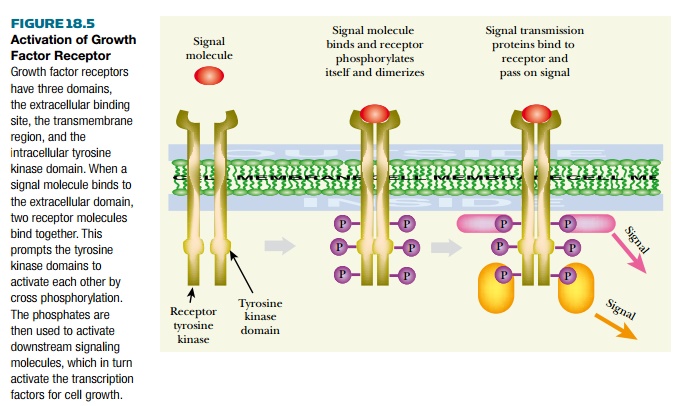Chapter: Biotechnology Applying the Genetic Revolution: Molecular Biology of Cancer
Cell Division Responds to External Signals
CELL DIVISION RESPONDS
TO EXTERNAL SIGNALS
A large number of extracellular
growth factors and hormones exist. Many are specific for particular cells or
tissues; for example, epidermal growth factor (EGF) stimulates epithelial cells
and fibroblast growth factor (FGF) stimulates muscle cells. Growth factors are
bound by specific cell surface receptors. Binding activates the inner domain of
the receptor, which is often a protein kinase itself or else activates an
associated protein kinase (Fig. 18.5). Typically, the protein kinase activates
a protein of the Ras family and this in turn stimulates a phosphotransfer
cascade. This consists of three mitogen-activated
protein (MAP) kinases. MAP kinase kinase kinase (MAPKKK) activates MAP
kinase kinase (MAPKK), which activates MAP kinase (MAPK). Finally, MAPK
phosphorylates transcription factors that activate genes needed early in cell
division, including the gene for cyclin D.

Related Topics